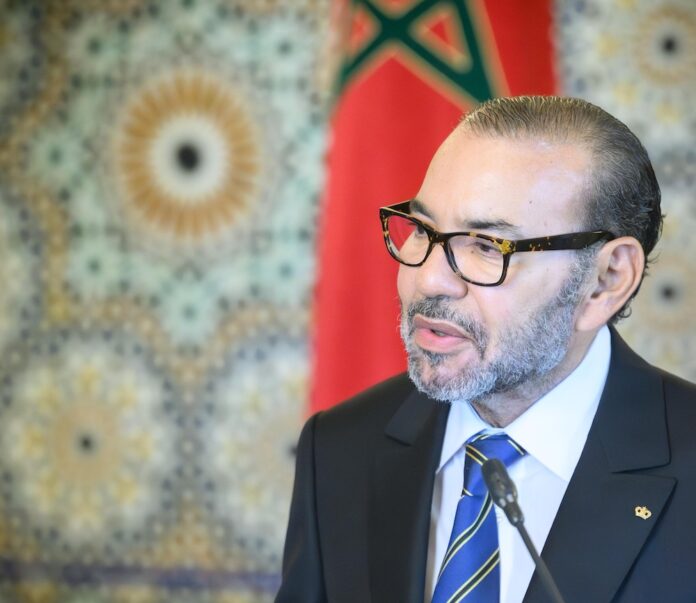At a high-level ministerial meeting led by King Mohammed VI on Sunday, October 19, 2025, at the Royal Palace in Rabat, Morocco’s 2026 Finance Bill was formally presented. The session, held under Article 49 of the Constitution, marked a key step in shaping the country’s fiscal and economic direction for the coming year. During the meeting, the Minister of Economy and Finance delivered a detailed overview of the national budget framework, aligning the bill with the King’s latest strategic priorities outlined during the Throne Day and parliamentary opening addresses.
At the heart of the 2026 budget lies an ambitious vision: accelerate Morocco’s transformation into an emerging nation while reinforcing social justice, regional development, and a stronger welfare state. This direction is being pursued amid persistent global economic uncertainty that continues to weigh on international growth prospects.
Despite the global volatility, Morocco’s economic performance in 2025 has remained resilient. Projections suggest a growth rate of 4.8% for the year, driven by strong domestic demand and a surge in non-agricultural sectors. Inflation was kept in check at just 1.1% by the end of August, while the budget deficit narrowed to 3.5% of GDP—a testament to improved fiscal management and structural reforms.
The proposed Finance Bill for 2026 is anchored in four key priorities. First, it aims to solidify recent economic gains and elevate Morocco’s standing among emerging markets. This will be done by boosting both domestic and foreign investment, rolling out the national investment charter more effectively, advancing the green hydrogen initiative, and expanding innovative public-private partnerships. New funding avenues will also be explored to diversify economic resources.
Special attention will be directed toward micro, small, and medium-sized enterprises, which remain a cornerstone of job creation in the national economy. A fresh support mechanism will combine financial backing with technical assistance to spur entrepreneurship, employment, and regional equity. In parallel, greater efforts will target youth and women’s inclusion in the labor market and mitigate the impact of drought on rural jobs. Ongoing aid to livestock farmers will also continue, aimed at rebuilding national herds.
Second, the government plans to launch a new wave of regionally tailored development programs. These initiatives will highlight local strengths, reinforce Morocco’s advanced regionalization model, and ensure solidarity across provinces. Designed in consultation with local stakeholders, these programs will prioritize youth employment, improve healthcare and education, and bridge territorial disparities. Fragile areas, particularly mountainous regions and oases, will receive targeted investment, along with sustainable coastal development and an expanded initiative to support emerging rural hubs.
A significant budgetary push is also planned for health and education. Following royal directives, the government will allocate a combined 140 billion dirhams to these two sectors in 2026 and create over 27,000 new public service positions. In healthcare, new university hospital centers will open in Agadir and Laayoune, while construction and equipment of the Ibn Sina Hospital in Rabat will be completed. Work will also continue on university hospitals in Béni-Mellal, Guelmim, and Errachidia, alongside upgrades to 90 hospitals nationwide.
Education reform will accelerate as well. The government aims to expand access to preschool, strengthen support services for students, and improve the quality of teaching across the board.
The third priority centers on deepening Morocco’s social welfare model. Efforts will continue to roll out the King’s ambitious plan for universal social protection, including the implementation of direct financial aid to four million low-income households. Monthly allowances for children will be increased, ranging from 50 to 100 dirhams for the first three children. Additional support will be introduced for orphans and abandoned children living in social care institutions.
Plans are also underway to broaden pension coverage and implement nationwide unemployment benefits. Meanwhile, the direct housing assistance program for first-time homebuyers will continue.
The fourth and final pillar of the Finance Bill focuses on structural reform and fiscal sustainability. A major overhaul of the Organic Finance Law will redefine how public policies are governed, with a sharper focus on accountability, measurable outcomes, and a more integrated territorial approach. Public sector reform will gain momentum through the restructuring of state-owned enterprises, improved asset management, and a push for better-performing public investments that align with balanced regional development.
Justice sector reforms will also be advanced to bring legal services closer to citizens and further improve the business climate.
The Council of Ministers has officially approved the general direction of the 2026 Finance Bill, signaling the government’s intent to steer Morocco toward a more inclusive, resilient, and forward-looking future.
